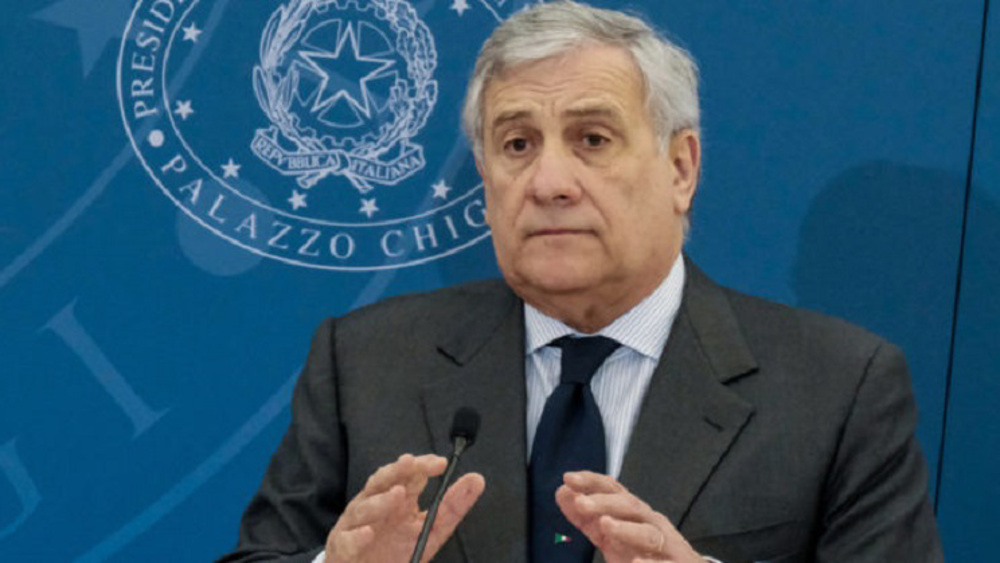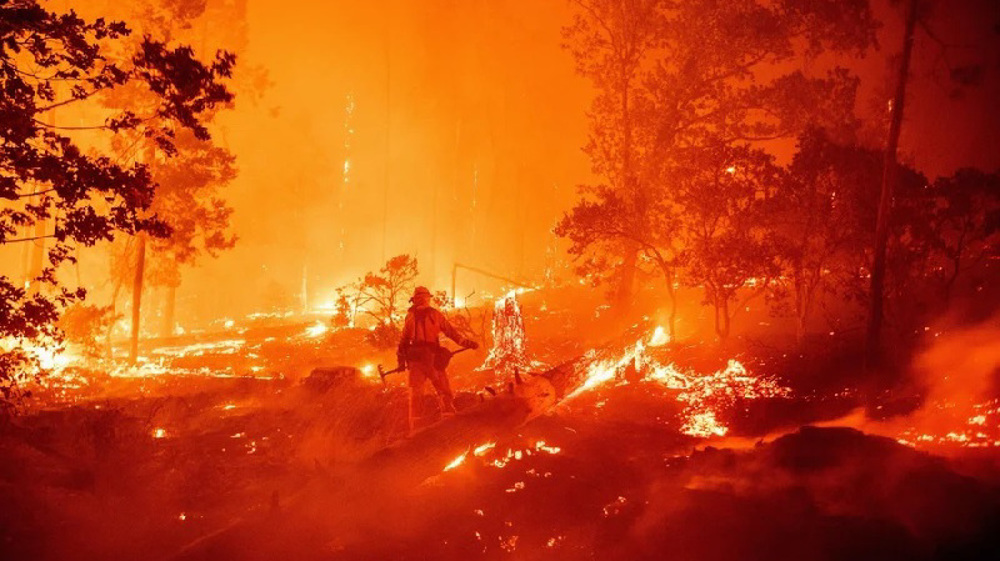Inequalities at heart of America’s educational system
The educational institutions in the United States were, historically, supposed to represent the ideal of equal opportunity, but there are still persisting inequalities at the heart of America’s educational system, mainly affecting members of racial and ethnic minority groups and economically disadvantaged students.
The past twenty years or so has seen hundreds of thousands of American students exposed to gun violence during school hours and many a deadly shooting incident at American schools and university campuses.
Student debt, which has become a national crisis in the US, is dragging down the economy, fueling the racial wealth gap, and even destroying lives. Advocates and debtors have raised the alarm regarding soaring debts, loans and tuition fees and their decades-long consequences for students in America.
Teachers are also frustrated. Although their job comes with unique challenges, the majority of them earn a solid middle-class wage. Nowadays, and after years of ineffective attempts to raise their salaries and improving their teaching conditions, many of them are simply leaving this vital profession in search of greener pastures.
Research published in 2019 showed that New York schools are the most segregated in the US, revealing that they not only isolate students by race, but also by their socio-economic status.
We have such a disparity between schools that largely serve black and Latino populations, and then the small number of schools that white parents tend to send their children to. And so I've been covering school segregation for a long time, but then had my own child who was four years old, and was having to suddenly pick a school for her in a very segregated system.
Nikole Hannah-Jones, Author, New York Times
Black and Latino children are more likely to attend schools with inexperienced teachers
Even if these schools were roughly equivalent academically that would still be a violation of the principle of Brown versus Board of Education, that separate educational facilities are inherently unequal, but in practice. they are very rarely equal in any way. Black and Latino children are more likely to attend schools with inexperienced teachers, which are then less likely to offer a college prep curriculum, on top of which because race and class are inextricably linked. Those students are six times as likely to be in high poverty schools, and while there are teachers and students working incredibly hard in those places they are often doing so with fewer resources.
John Oliver, Political Commentator
Political solution to racism at US schools
The US has a two-pronged approach to schooling in which the white middle classes have a clear advantage over the black lower classes in society.
I think that it's clear that the United States has a historical equity issue when it comes to racial justice across our society but especially in our schools. Something that we learned just last year, that we've always known intuitively, is that schools that dominantly serve white students receive approximately an additional $23. billion in funding per year. Of course the significant portion of that difference is because the way that we fund schools is heavily dependent on property taxes here in the United States.
Jameson Brewer, Prof. of Social Foundations of Education, UNG University of North Georgia
“Keeping the schools safe” is another challenge the different US administrations have faced amid a steady rise in school shootings throughout the United States in the past couple of decades.
Majority of US teenagers worry about school shootings
An investigation carried out by the Washington Post shows that since the Columbine High School Massacre in 1999, more than 230,000 students across 243 schools have been exposed to gun violence.
The frequency of this notorious practice has turned it into a recurring theme in the US public discourse and media coverage.
Many students and parents are outraged by what they refer to as gross incompetence on the part of school and law enforcement officials. They have repeatedly called for gun legislation and further school safety measures.
US administrations, be they Republican or Democrat, have consistently “flip-flopped” on their pledges for new gun-control laws. Although some state legislators have passed several gun control regulations in recent years, the National Rifle Association continues to press lawmakers to prioritize the interests of gun owners across the US.
That shows that the fate of hundreds of thousands of innocent children lies in the hands of one of the most powerful lobby groups in the US, the foremost defender of the country’s controversial second amendment of the right of the people to keep and bear arms.
How can education combat gun crime and mass school shootings?
It is also clear that the United States has a gun violence, problem. There are estimated to be approximately two or three guns for every person in the country.
So I think that the answer to the question is that schools can play a part.
I think that clearly teachers of educators and administrators and counsellors think that they can and and historically they always have been, and we can continue to serve students and serve community needs and provide resources for students who are hurting, provide resources to communities in the broader society but i i think that the answer to the question. I think it has to come from a broad societal sort of examination of how this country approaches, particularly gun ownership, but also the mass expansion of gun ownership over the past few decades because I think that teachers and educators can play a part of but I think that, I think it'd be very difficult for teachers in schools by themselves to fix what is in effect a societal issue.
Jameson Brewer, Prof. of Social Foundations of Education, UNG University of North Georgia
The student loan crisis
U.S. leaders refer to the rise in student loan debt as a crisis. While the students face many barriers to afford their higher education, teachers have also become frustrated with what they view as unbearable teaching conditions and low salaries.
In the past decade, the United States’ student loan debt totals have skyrocketed. The statistics in 2020 show that there are more than 45 million borrowers in the US who collectively owe nearly 1.6 trillion dollars in student loan debt.
Although some American politicians have called for the cancellation of the student debts, the dynamic has turned into a crisis, a burden that holds many people back from saving and even making ends meet. However, students are not the only people struggling with their finances in the US educational environment. Many American teachers have also gone on weeks-long strikes, demanding pay increases.
The country’s roughly 3.2 million public school teachers are experiencing some of the worst wage stagnation of any profession, claiming that they are severely underpaid, as it is. The surprising outbreak of the COVID-19 has also created new struggles for the American education system.
Not only the policymakers’ efforts for improving the financial plight of public school teachers have been disrupted, but political tensions over re-opening of the schools have also escalated, turning the issue into an important topic in the country’s political debates ahead of the presidential election.
US infrastructure in terrible state of disrepair
US Infrastructure is in a state of disrepair and the need for more and better infrastructure is acute. There are many visible deficiencies and underlying problems in the country that make the reformation of America’s infrastructure a daunting challenge.
Experts say the US infrastructure faces a funding gap of more than 2 trillion dollars, needed by 2025. The intimidating specter raises the question of resource for financing the US infrastructure needs. Many call for increased federal spending and a federal infrastructure bank to generate revenue and offer institutional investment to development projects.
However, unlike the European countries that receive the major part of their infrastructure development funding from the national level, the U.S. federal government only provides 25% of the country’s needed funding for development.
Enter the Private Sector
Consequently, many argue that the presence of the private sector is essential. Those who are skeptical of federal government spending, say the existence of a public-private partnership would be more efficient and cost effective.
Infrastructure is also critical to the employment rates in the US. Data shows that transportation infrastructure investment supports more than 13-thousand jobs per year. These show that there is a need for a data-driven approach towards infrastructure funding rather than a politically-driven one.
There are huge numbers of productive investments that the United States could make it's not that everything is crumbling but certainly we're a major contributor to global climate disruption and certainly there are many productive things we could do to improve things like the safety of dams and bridges, indeed, about six miles from where I'm giving this interview. A major bridge across the Mississippi River famously fell into the river and killed several people. And so this is a win win, and the answer to your question directly on funding is the United States of course is a nation with a sovereign currency that can borrow, or simply issue money in its own currency, even without directly borrowing. So this is modern monetary theory. The problem is not cash. The problem is, political willingness, indeed, it's an inside joke in the United States. And whenever you say infrastructure week is coming because President Trump has been, you know, promising for four years now, that next week. He's going to do infrastructure which would be to have great bipartisan support, and of course he has never actually done it.
William K. Black, Prof. of Economics, University of Missouri-Kansas City
Rebuilding America
With the impact of the Covid Virus hitting certain infrastructures more than others, where should attention be focused when it comes to truly rebuilding America, and making it 'great again’?
COVID-19 hasn't directly attacked infrastructure in the sense of destroying infrastructure, but it certainly has made it more difficult to do things like improve infrastructure by having construction projects. That would be inside, and there hasn't been any political will, on the part of the Republican majority leader in the Senate to do big infrastructure programmes. And so we were in unusual circumstance politically in which President Trump wants a large bill including some infrastructure and where the democrats want it but Mitch McConnell controls the Senate, as Majority Leader, and is, at least at this juncture saying that he wants no legislation before the US election, which is, you know, in under two weeks.
William K. Black, Prof. of Economics, University of Missouri-Kansas City
Many believe that the covid-19 pandemic has provided a chance for the bipartisan passage of an infrastructure package, which could stimulate the economy during a period when borrowing is cheap and the interest rates are low.
Funds have already been depleted
Since March, U.S. Congress has passed 3 COVID-19 stimulus packages, and many of their funds have already been depleted. Although there have been some allocations for airports and transit agencies in these aids, they lack funding for capital projects.
In June, the Democrats unveiled a 1.5 trillion dollars infrastructure bill aimed at increasing federal spending on roads, bridges, low-income schools, housing, and broadband access. The measure was however never taken up by Senate, where majority leader Mitch McConnell called it a pointless political theatre.
Therefore, despite the presidential election being over, signing landmark legislation and a handful of related races in an area where everybody demands progress would determine the success level of the next American president.
Hamas thanks Iran, Resistance Front following achievement of ceasefire in Gaza
'Capitulation': Israeli officials and media concede Gaza defeat as truce unfolds
'Gaza has won': Social media users react to ceasefire with mix of relief, joy
Iran seeks South Korea’s assistance for AI, fiber-optic projects
VIDEO | Iran's 'Eqtedar' (Power) maneuver
Israel hits HTS military target in Syria for 1st time since fall of Assad
VIDEO | Press TV's news headlines
Israel has slaughtered 13,000 students in Gaza, West Bank
















 This makes it easy to access the Press TV website
This makes it easy to access the Press TV website